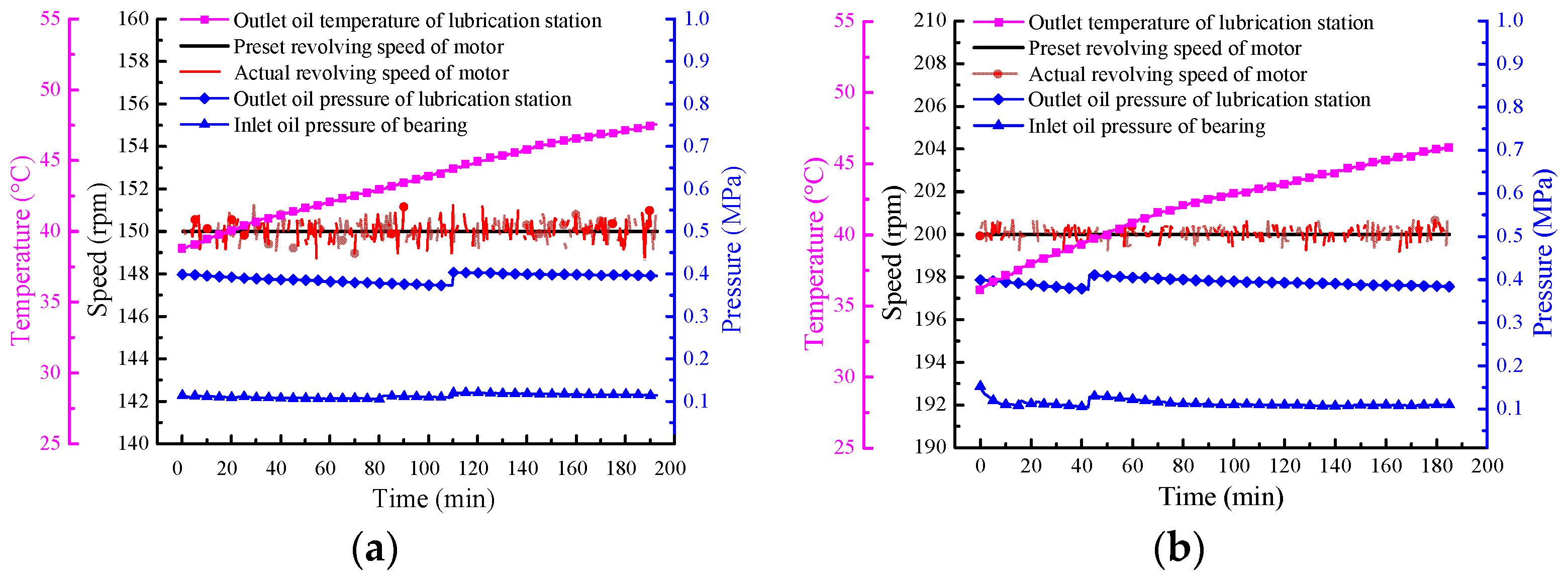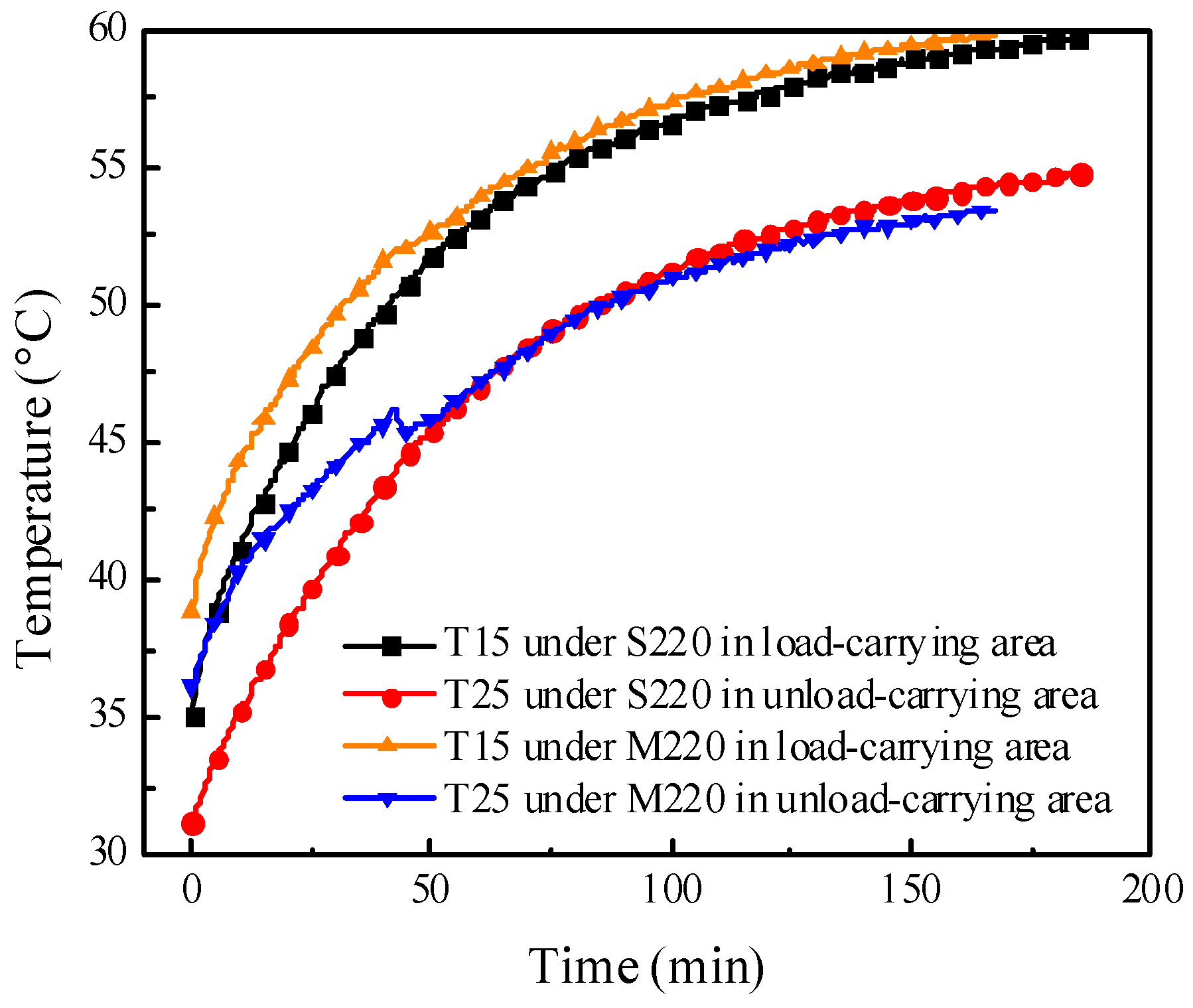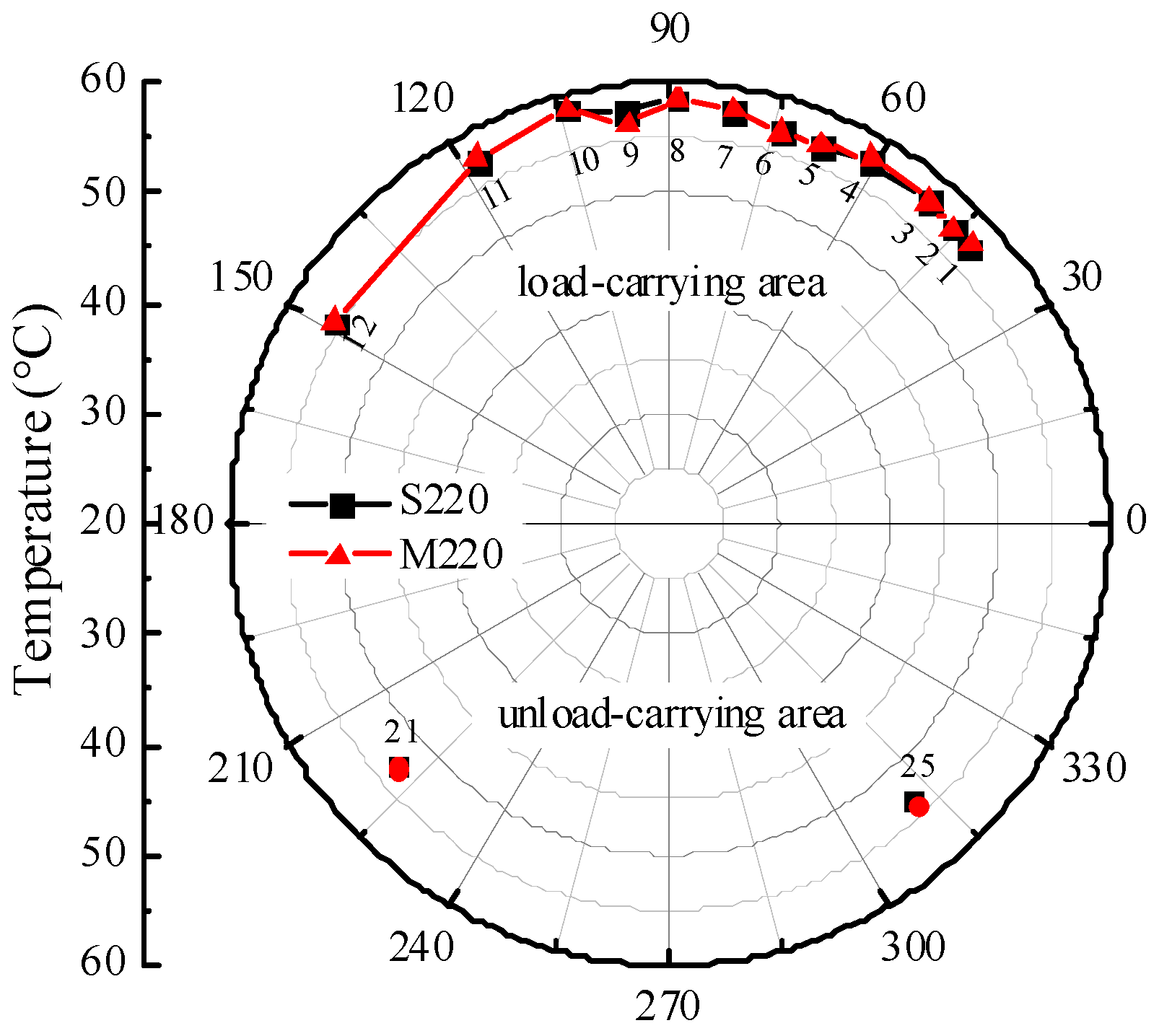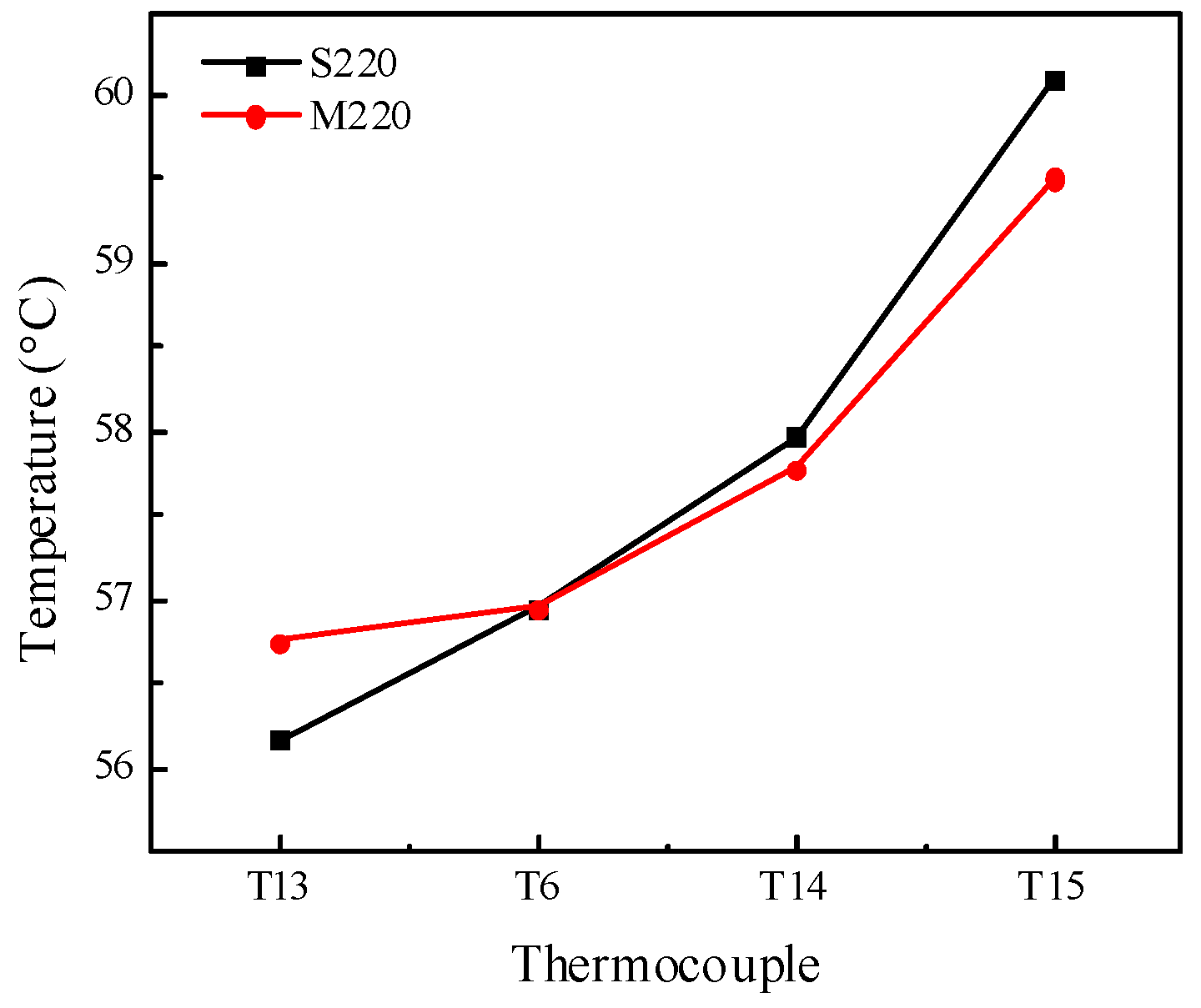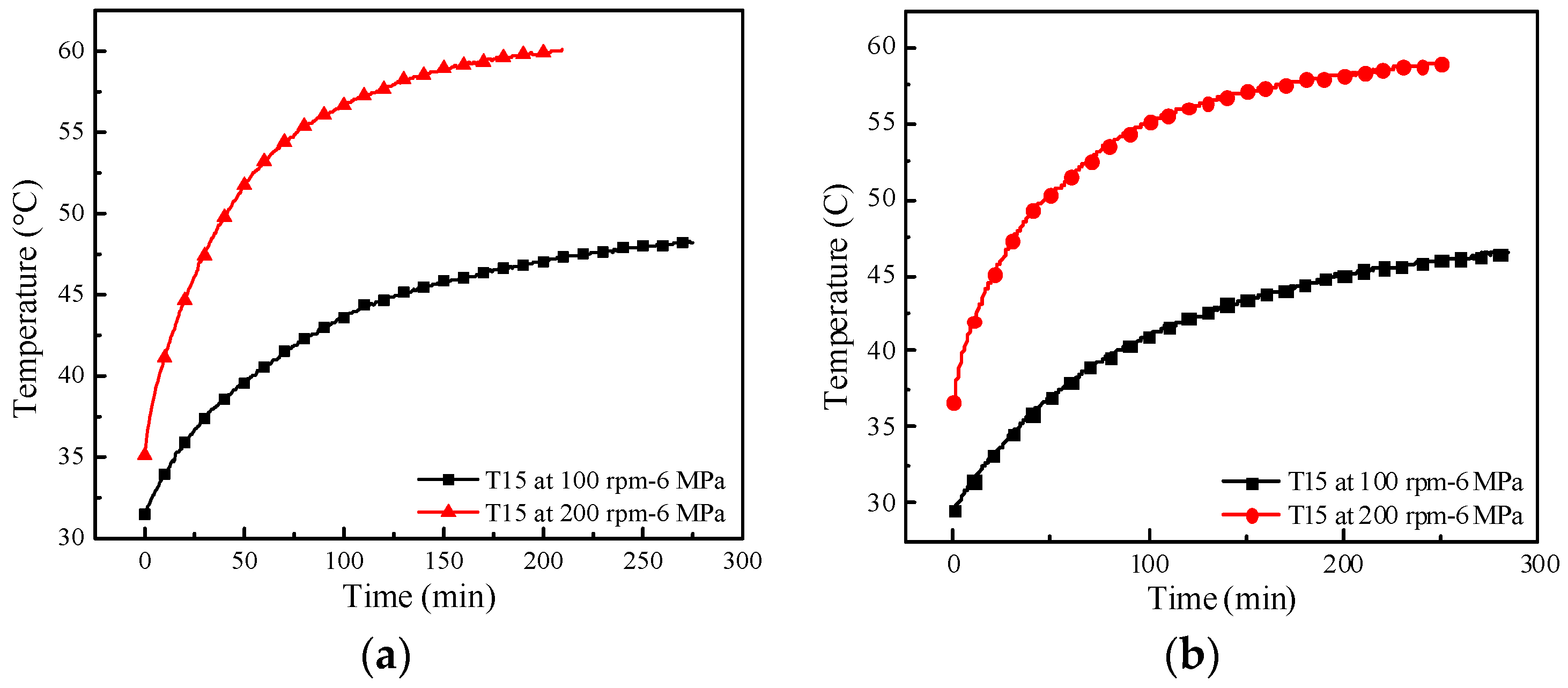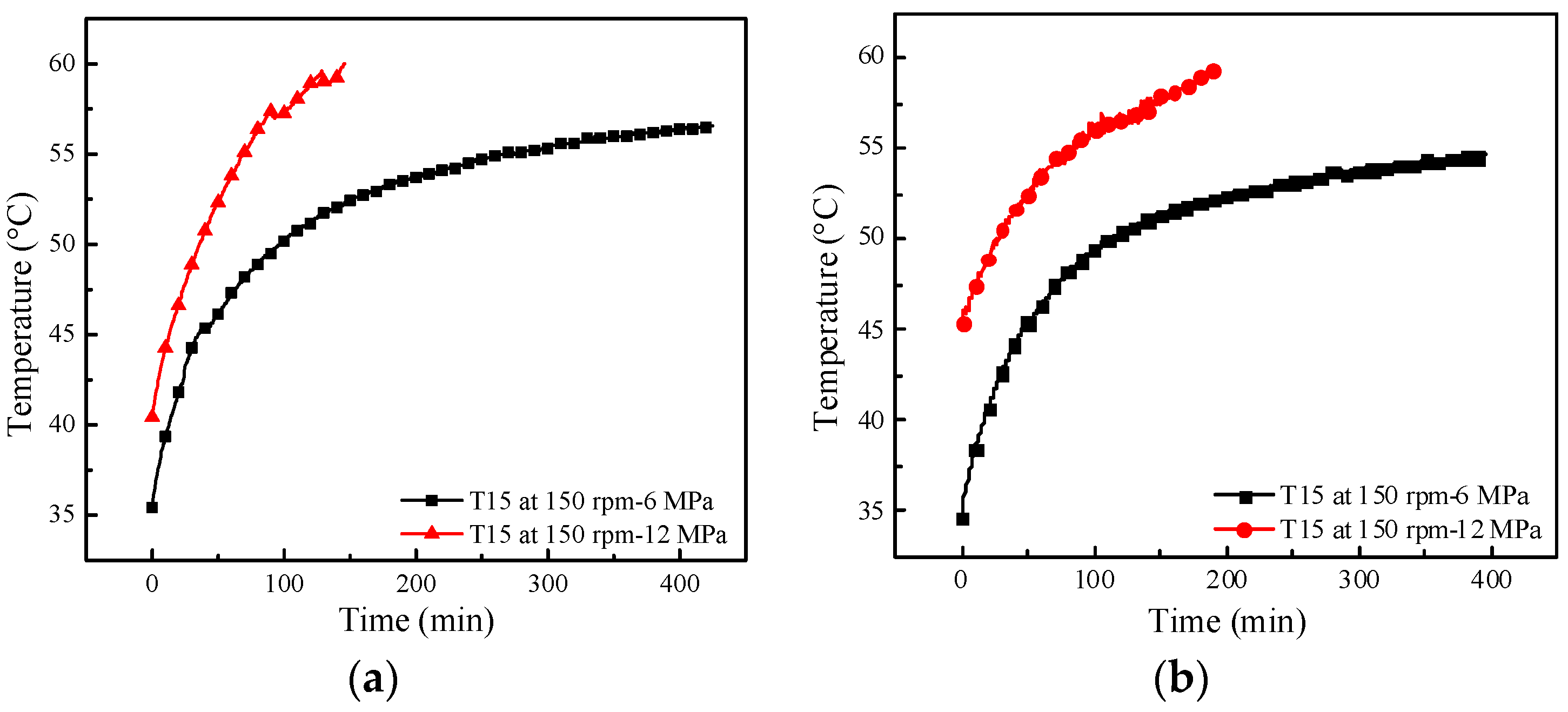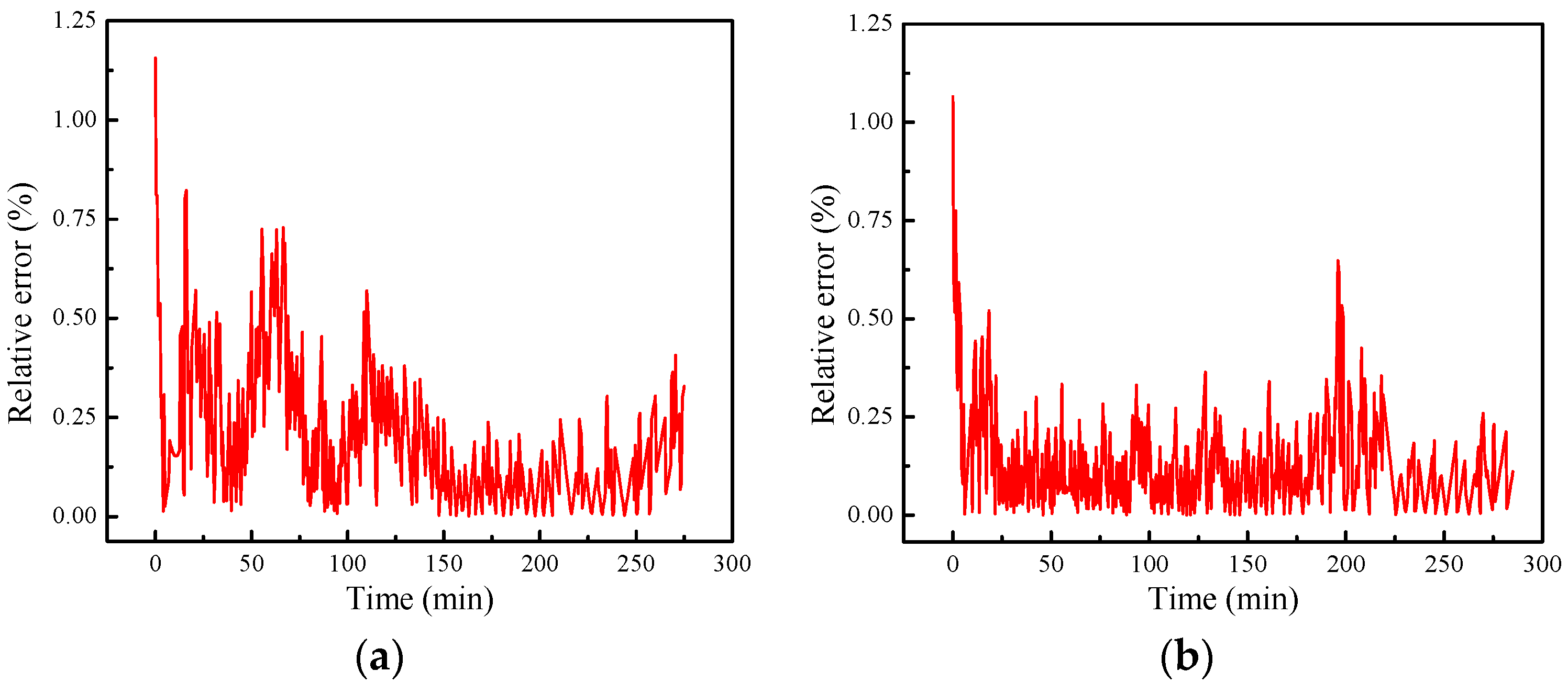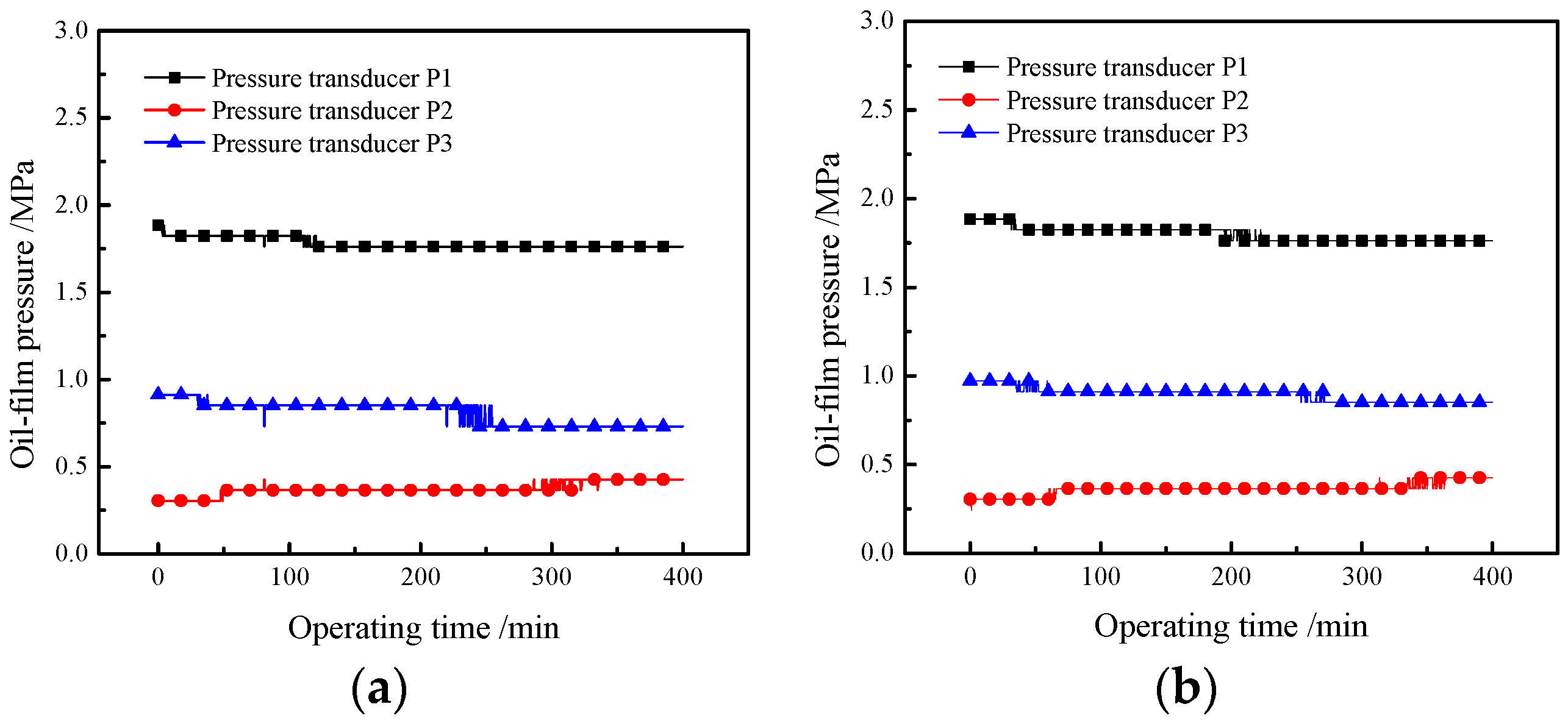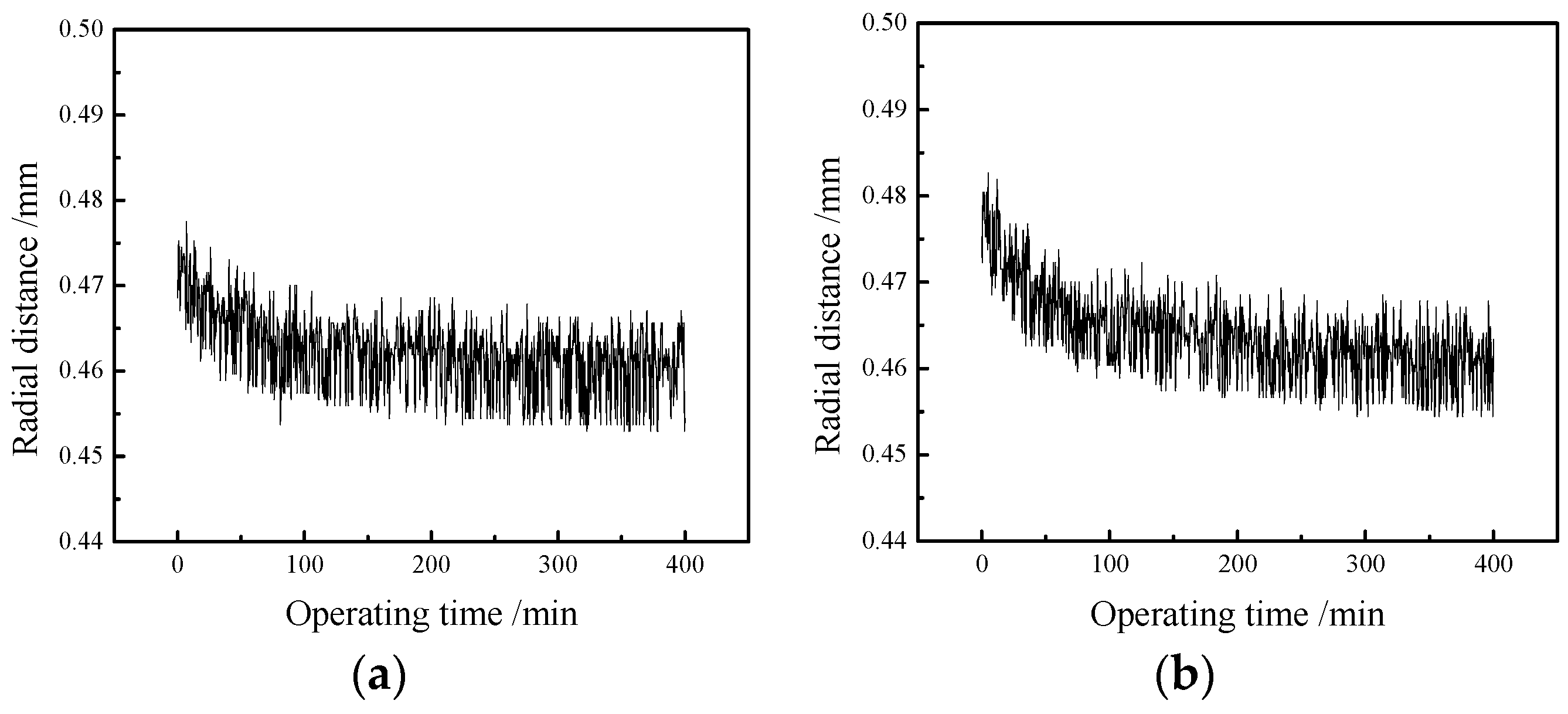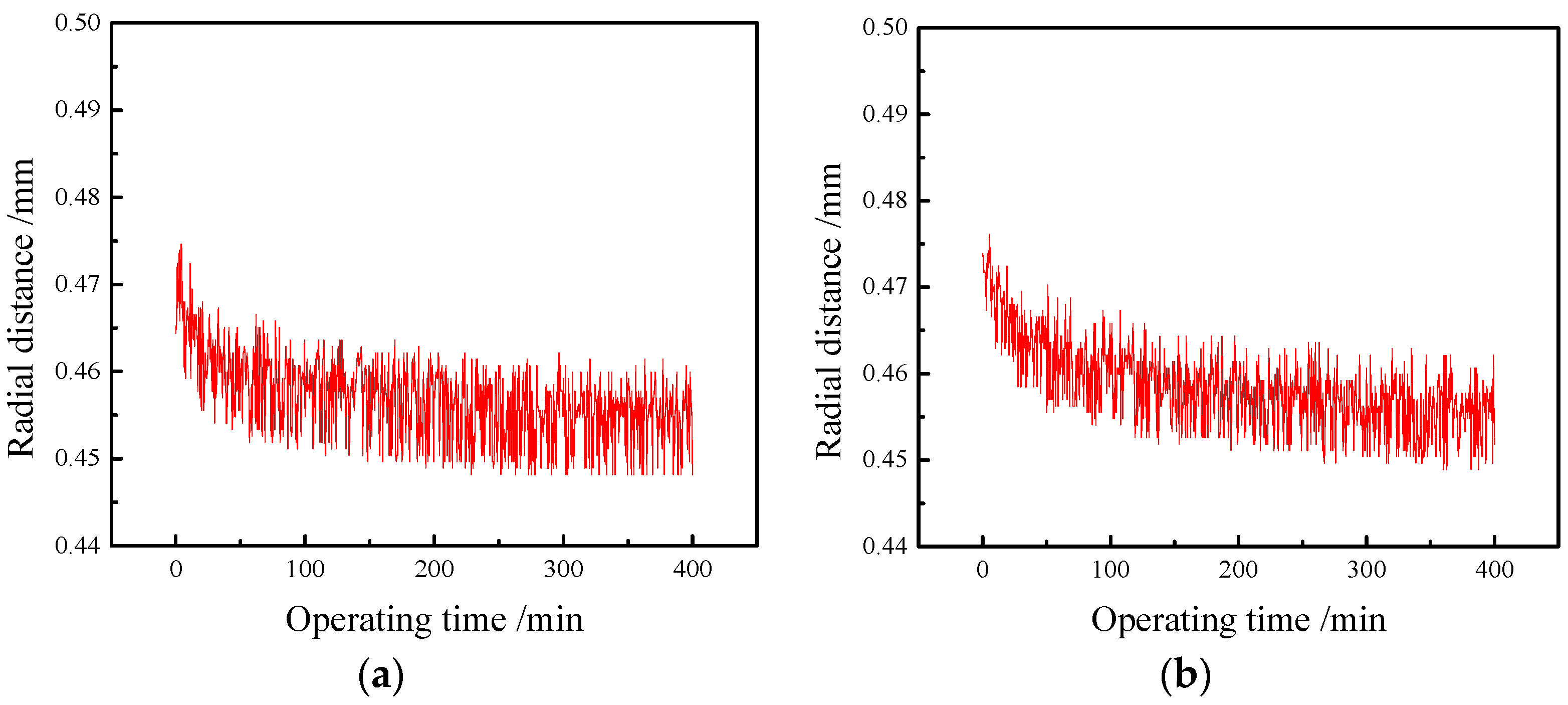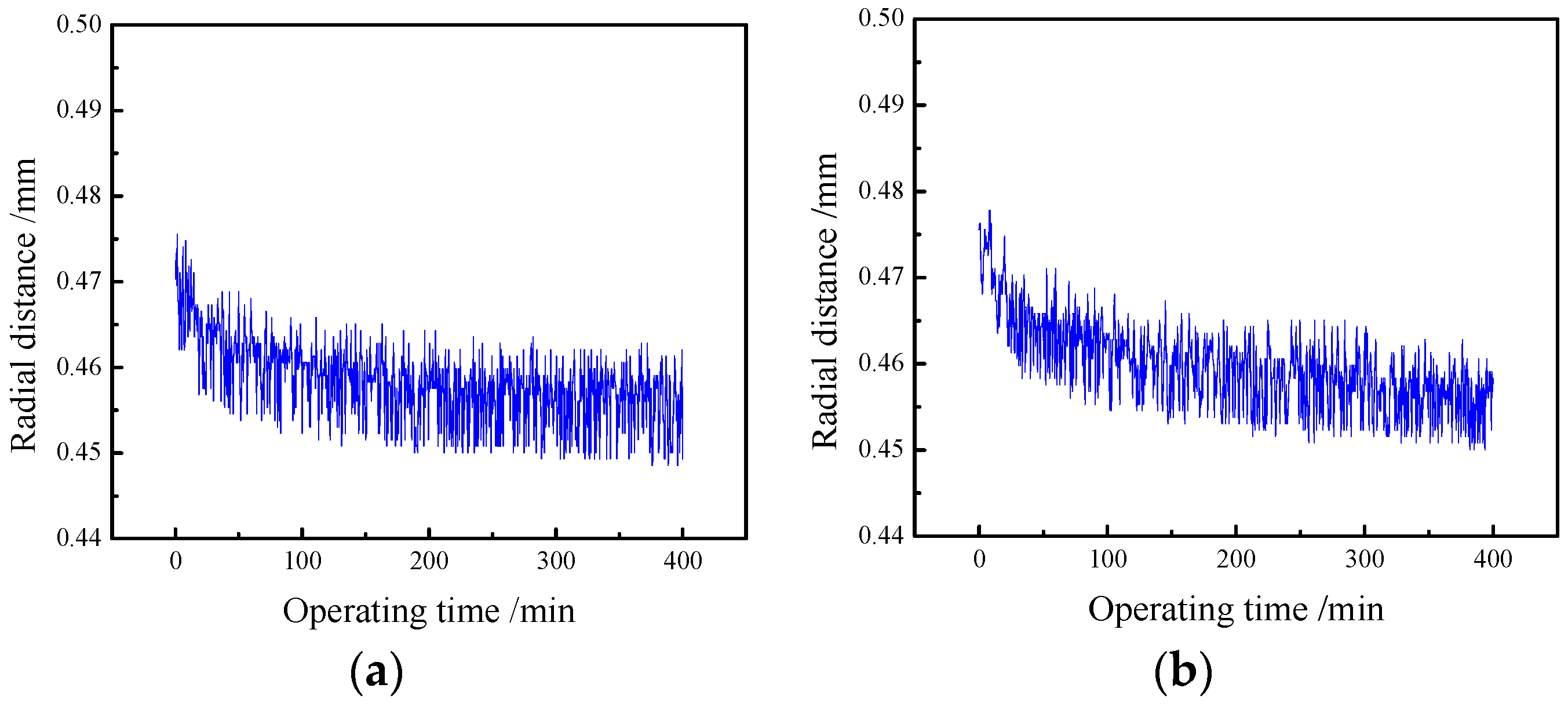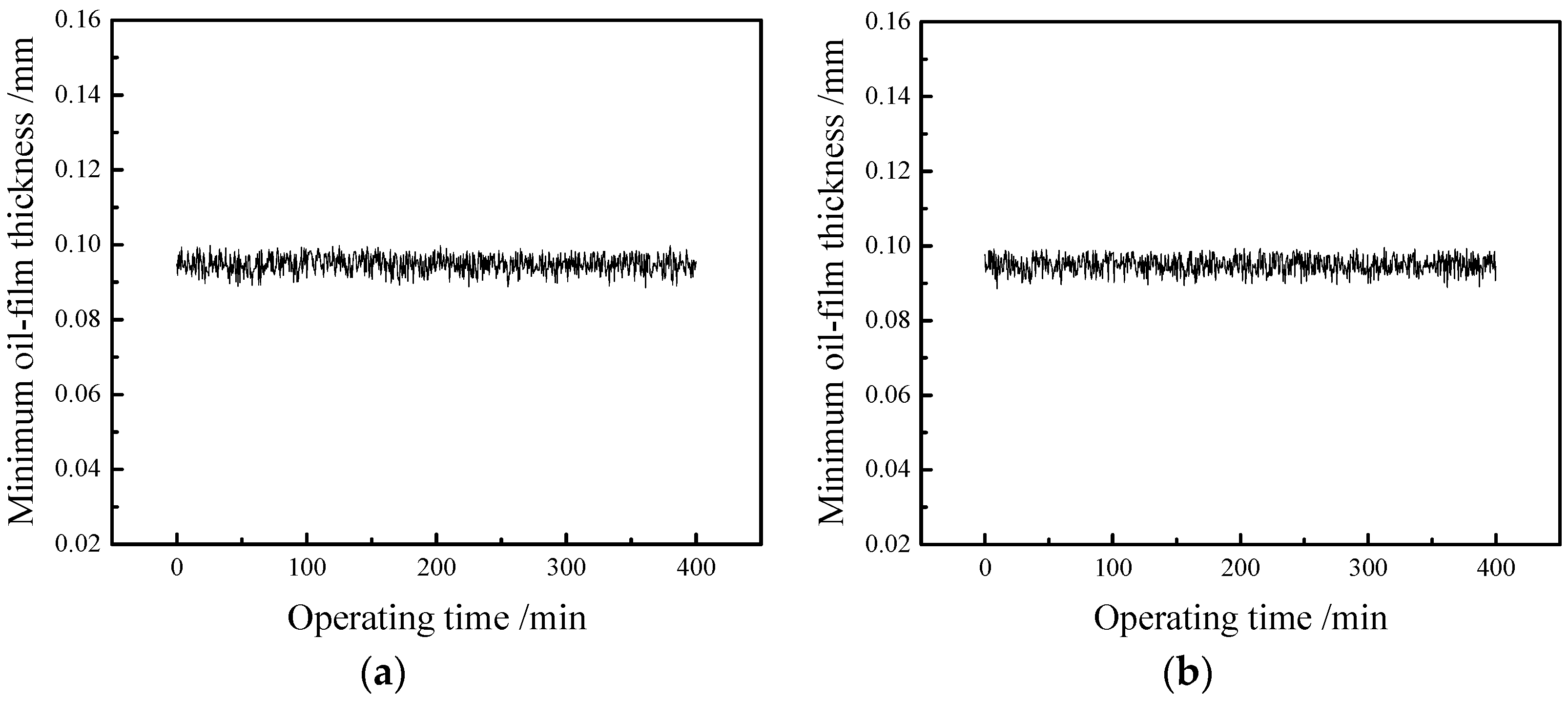1. Introduction
Oil-film bearing oil is mainly used for the lubrication of oil-film bearing in a strip and wire mill [
1]. The property of oil mainly depends on the quality of base oil and additives, as well as the optimization of compound formula. If the oil is not qualified, it will not only affect the quality of steel plate and lead to economic loss, but might also result in a severe accident. Research shows that 75% accidents in steel mills result from the failure of lubricating oil [
2]. Generally, there are four evaluation methods to evaluate the performances of oil-film bearing oil, which include physical and chemical monitoring, simulation test, bench test, and running test [
3].
Physical and chemical monitoring is the most basic evaluation method to check whether the physical and chemical indexes of oil-film bearing oil can meet the standard or not, the commonly used analytical methods are spectral analysis [
4,
5], differential scanning calorimetry [
6], and the chemical approach [
7]. However, these methods can hardly reflect the lubrication status of bearing friction pairs. Simulation test is used to simulate the working status and condition of devices in the laboratory. It can only be applied to some simple operation conditions, but it cannot reflect the effects of complicated conditions on the operating performances of oil-film bearing. Test methods mainly include four-ball test [
8,
9] and FZG (Forschungsstelle fur Zahnrader und Getriebebau) gear test [
10], etc. The bench test is the most economical and effective. Under all comprehensive rigorous experimental conditions, bench testing can realize the operation under different conditions of devices and can intuitively reflect the operating performances of oil. Testing oil-film bearing oil is mainly done on the oil-film bearing test rig [
11,
12,
13]. The final procedure of oil development is the running test, and the test for oil-film bearing oil is required to be conducted on an on-site rolling mill [
14,
15], but too many influential factors need to be considered, and even the normal production of enterprise will be influenced or interrupted, so it is difficult to implement this method.
Bench testing is regarded as the most economical and ideal evaluation method. Some experts made contributions to bench testing. Tadashi Katafuchi evaluated the low-viscosity base oil [
3], F.P. Brito studied the effect of heavy loads on lubrication performance [
16]. P.G. Morton studied the stability of bearings [
17]. J. Bouyer measured the start-up torque of bearings under different pressure [
18]. Sergei B. Glavatskih evaluated sensor performances under various operating conditions [
19]. Furthermore, Gregory F. Simmons and Sergei B. Glavatskih did some work on synthetic lubricants [
20], but their test rig did not cover the medium and heavy load range. Although these contributions referred to bench testing of lubricating oil, they did not provide a method to evaluate oil-film bearing oil comprehensively. In this study, bench testing was done on a large-scale oil-film bearing test rig, and the test rig can simulate the actual rolling process covering a load range from light loads to heavy loads, i.e., the external hydraulic pressure is from 0 MPa to 25 MPa, and the maximum load in this study is 12 MPa. Furthermore, the distribution of transducers in the test rig was based on theoretical calculation results of oil-film pressure, oil-film thickness, and oil-film temperature, and the positioning of transducers was determined to be in accordance with mesh subdivision of actual oil-film performances [
2,
21]. The test on oil-film bearing oil of different brands was compared, and the oil-film temperature, oil-film pressure, and oil-film thickness were analyzed respectively. Finally, a comprehensive evaluation on operating performances of oil S220 was made after on-line testing for three months.
2. Experimental Apparatus and Method
Bench test of oil-film bearing oil was conducted on large-scale mill oil-film bearing test rig. This test rig consists of a mechanical system, hydrodynamic lubrication system, hydrostatic lubrication system, thin-oil lubrication system used for the accelerator, hydraulic loading system, electrical control system, pneumatic control system, and data acquisition system. Its mechanical system is composed of a hydrostatic-dynamic oil-film bearing subsystem and experimental hydrodynamic oil-film bearing subsystem. The operating performances of oil-film bearing oil can be monitored on-line. The schematic diagram of oil-film bearing test rig is shown in
Figure 1 [
22].
Several kinds of transducers have been installed in oil-film bearing test rig.
Figure 2 is the distribution of different transducers on the test bearing. There are 3 pressure transducers (HYDAC-ETS300, HYDAC, Bremen, Germany) used for measuring oil-film pressure, 6 displacement transducers (BENTLY3300X, BENTLY, Exton, PA, USA) for oil-film thickness, 21 thermocouples (HYDAC-ETS300, HYDAC, Bremen, Germany) for oil-film temperature, and 1 torque transducer (ZRN503) (ZRN503, Beijing Ruineng Instrument Technology Co., Ltd., Beijing, China) for power or torque measurement in
Figure 1. The transducers are distributed based on theoretical calculation results of oil-film pressure, oil-film thickness, and oil-film temperature, and the positions of transducers are determined in accordance with mesh subdivision of actual oil-film performance.
Physical signals from these transducers will be translated into digital signal via PLC (Programmable Logic Controller), and the digital signal will be displayed on IPC (Industrial Personal Computer) (610L, Advantech Co., Ltd., Shanghai, China). So the operating performances of oil-film bearing (Taiyuan Heavy Industries Co., Ltd., Taiyuan, China) can be monitored on-line. The main structural parameters of test bearing are shown in
Table 1. When the oil supply is sufficient and the system is preheated, the instruction from upper computer will be transmitted to PLC, thereafter, the DC (Direct Current) electromotor (24-250-42, Xi'an Motor Co., Ltd., Xi'an, China) and hydraulic loading system will be started. When the test rig operates at the preset speed and load, the transducers begin to collect data of the oil film. In order to analyze the operating performances of oil-film bearing oil, six typical load cases were set, as shown in
Table 2.


